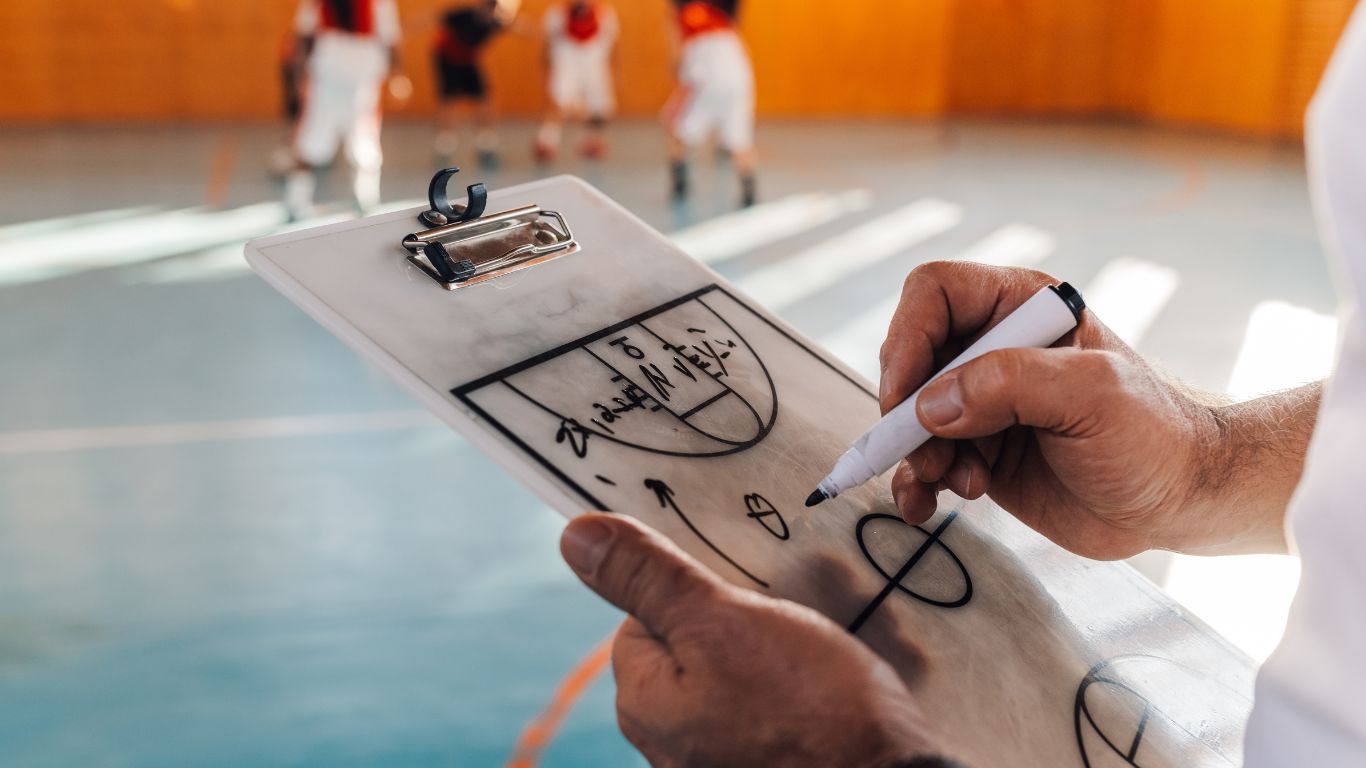There are 22 soccer players on the field during a standard match, 11 from each team. The game requires teamwork, strategy, and skill, with each player playing a crucial role in the match.
Soccer, also known as football in many countries, is the world’s most popular sport, attracting millions of fans and players globally. The game’s fast-paced nature and competitive spirit have made it a beloved pastime for people of all ages. Whether it’s the thrilling goals, impressive dribbling, or nail-biting penalty shootouts, soccer never fails to captivate audiences around the world.
We will explore the dynamics of soccer, including the roles of different players on the field, the rules of the game, and the strategies that teams employ to secure victory. So, let’s dive into the exciting world of soccer and uncover what makes it the beautiful game.

Credit: www.skysports.com
2. Traditional Team Formations
In the game of soccer, team formations are crucial for strategizing and maximizing players’ strengths. Traditional team formations play a key role in shaping the dynamics of a soccer match. Let’s explore some of the classic team formations.
2.1 The 4-4-2 Formation
The 4-4-2 formation is one of the most widely used formations in soccer. In this setup, there are four defenders, four midfielders, and two forwards. This formation provides a balanced approach to both offensive and defensive play, making it a popular choice for many teams. The defenders work together to protect the goal, while the midfielders and forwards collaborate to create scoring opportunities.
2.2 The 4-3-3 Formation
The 4-3-3 formation is characterized by four defenders, three midfielders, and three forwards. This formation is known for its emphasis on attacking play, with the three forwards working together to pressure the opposing team’s defense. The three midfielders provide support to both the defensive and attacking aspects of the game, creating a versatile and dynamic playing style.
2.3 The 3-5-2 Formation
In the 3-5-2 formation, there are three defenders, five midfielders, and two forwards. This formation offers a strong midfield presence, allowing for greater control of the game’s tempo and possession. The defensive line’s smaller size is compensated for by the additional midfielder, who can assist both defensively and offensively. The two forwards coordinate their efforts to apply pressure on the opposing team’s defense and create scoring opportunities.

Credit: ballparkdigest.com
3. Modern Team Formations
3. Modern Team Formations in soccer have evolved to meet the demands of the game. New tactics and strategies have led to the development of various formations that teams utilize to gain a competitive edge against their opponents.
3.1 The 4-2-3-1 Formation
The 4-2-3-1 formation is a widely used modern formation in soccer, characterized by a defensive back four, two central midfielders, three attacking midfielders, and a lone striker. This formation provides a strong defensive base while allowing for attacking flexibility through the midfield and up front, creating goal-scoring opportunities.
3.2 The 4-1-4-1 Formation
The 4-1-4-1 formation is designed to provide a solid defensive structure with a single defensive midfielder shielding the back four. It also offers a balanced midfield presence with four midfielders tasked with both defensive and attacking responsibilities. The lone striker up front ensures that the team remains compact and organized defensively while having the ability to launch quick attacks.
3.3 The 3-4-3 Formation
The 3-4-3 formation is an attacking-minded setup that features three defenders, four midfielders, and three forwards. This formation emphasizes offensive support from the midfield and width in attacking plays, allowing for quick transitions and counter-attacks. The three forwards provide constant pressure on the opposition’s defense and aim to create scoring chances.
4. Factors Affecting Team Formation
When it comes to soccer, the number of players on the field is just one piece of the puzzle that coaches need to consider. There are several other factors that come into play when determining the formation of a team. In this section, we will explore three key factors: playing style and tactics, strengths and weaknesses of players, and opponent analysis.
4.1 Playing Style And Tactics
The playing style and tactics of a team can greatly influence the number of players on the field. Different formations allow for different strategies to be implemented during a match. Coaches often opt for formations that best fit their team’s style of play and align with their tactical approach.
Table 1: Common Soccer Formations and Their Characteristics
| Formation | Characteristics |
|---|---|
| 4-4-2 | A balanced formation with a solid midfield and two strikers up front |
| 4-3-3 | An attacking formation that focuses on creating width and utilizing wingers |
| 3-5-2 | A versatile formation that provides both defensive stability and attacking options |
Choosing the right formation allows teams to effectively execute their game plan while considering the strengths and weaknesses of their players.
4.2 Strengths And Weaknesses Of Players
Understanding the individual strengths and weaknesses of players is crucial when determining the team formation. A coach must analyze the capabilities of each player to assign suitable positions. This analysis ensures that players are placed in positions where they can maximize their skills and contribute to the team’s success.
| Player | Strengths | Suitable Positions |
|---|---|---|
| John | Speed, dribbling | Winger, forward |
| Sarah | Passing, vision | Midfielder, playmaker |
| David | Tackling, positioning | Defender, holding midfielder |
By aligning players with positions that suit their strengths, teams can optimize their performance on the field.
4.3 Opponent Analysis
Analyzing the strengths and weaknesses of the opposing team is crucial in team formation. By understanding the playing style and key players of the opponent, coaches can adjust their formation and tactics accordingly. This analysis helps teams exploit weaknesses and neutralize threats, increasing their chances of success.
When forming a team, considering factors such as playing style and tactics, strengths and weaknesses of players, and opponent analysis allows coaches to create a formidable lineup that can adapt to different situations on the field. By strategically planning their team formation, coaches give their players the best chance to succeed.

Credit: www.intermiamicf.com
5. Finding The Perfect Team Formation
5. Finding the Perfect Team Formation
When it comes to soccer, finding the perfect team formation can make all the difference in achieving success on the field. A well-chosen formation can maximize the strengths of the players while minimizing weaknesses, creating a solid foundation for teamwork and strategy. In this section, we will explore three key steps to help you find the ideal team formation for your squad.
5.1 Assessing The Team’s Personnel
Assessing your team’s personnel is the first step towards discovering the perfect team formation. Each player brings unique skills and abilities that can greatly impact the game. Take the time to evaluate every player’s strengths and weaknesses, considering their position, technical abilities, and physical attributes.
In a table format, list out the positions and their corresponding players’ names, along with their key attributes:
| Position | Player | Key Attributes |
|---|---|---|
| Goalkeeper | John Smith | Excellent reflexes, good distribution |
| Defender | Lisa Johnson | Strong tackling, great positioning |
| Midfielder | David Rodriguez | Accurate passing, quick decision-making |
| Forward | Sarah Thompson | Pace, goal-scoring ability |
5.2 Experimenting In Training Sessions
Once you have assessed your team’s personnel, it’s time to experiment with different formations and tactics during training sessions. This allows you to test the effectiveness of various formations and make adjustments based on the players’ performances and compatibility.
Create a list of possible formations and assign players accordingly:
- 4-4-2: John Smith (GK), Lisa Johnson (DF), David Rodriguez (MF), Sarah Thompson (FW)
- 3-5-2: John Smith (GK), Lisa Johnson (DF), David Rodriguez (MF), Sarah Thompson (FW)
- 4-3-3: John Smith (GK), Lisa Johnson (DF), David Rodriguez (MF), Sarah Thompson (FW)
5.3 The Importance Of Flexibility
Flexibility is crucial when choosing a team formation. It allows you to adapt to different situations during a game, such as changes in tactics, injuries, or the need to exploit the opponent’s weaknesses. Ensure that each player understands their role in the formation and also the flexibility required to adjust as needed.
Remember, finding the perfect team formation is an ongoing process. Continuously assess your team, experiment with different formations in training, and emphasize the importance of flexibility. With these steps, you’ll be one step closer to creating a cohesive and successful team on the soccer field.
Frequently Asked Questions
How Many Soccer Players Are On The Field At One Time?
Typically, there are 11 soccer players on the field at one time, with each team having 10 outfield players and 1 goalkeeper.
Can A Soccer Team Play With Fewer Than 11 Players?
Yes, a soccer team can play with fewer than 11 players if there are players sent off due to penalties or injuries. However, if a team has fewer than 7 players, they will have to forfeit the match.
What Happens If A Team Has More Than 11 Players On The Field?
If a team has more than 11 players on the field, it is considered a violation of the rules, and the team will be penalized. The referee will ask the team to remove the excess players from the field.
Do Substitutions Affect The Number Of Players On The Field?
No, substitutions do not affect the number of players on the field. When a substitution is made, one player is replaced by another, so the total number of players remains the same.
Conclusion
The number of soccer players on the field varies depending on the game format, such as 11 players in standard matches or smaller teams for other variations. Understanding the player positions and rules is essential for players, coaches, and spectators alike.
By grasping the dynamics of player count, soccer enthusiasts can fully appreciate the tactics, strategies, and teamwork displayed on the field. Embrace the joy of the game and immerse yourself in the excitement of soccer, where teamwork makes the dream work.







